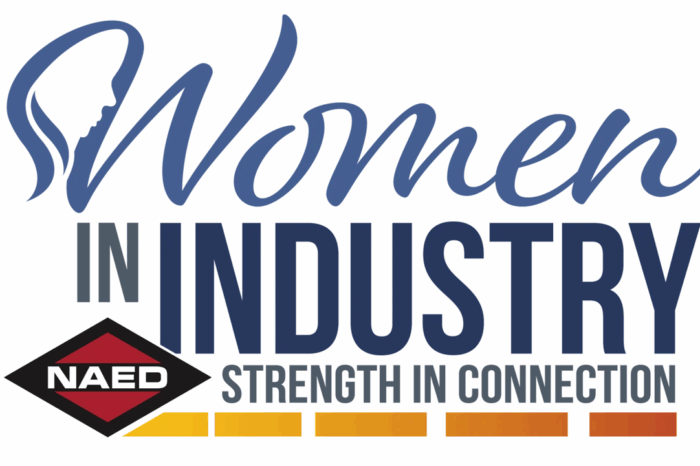2016 NAED South-Central Observations
 Stan and I attended the NAED South-Central, held in Las Vegas, last week. Reportedly 630 or so people were registered, albeit the “feel” of the meeting left one wondering “where are the people” as the general session seemed lightly attended and the 2 receptions didn’t feel crowded. During the day, attendees congregated in the first floor hotel lobby bar or were in manufacturer meeting rooms on the 5th floor or in suites. The hotel reader board listed about 30 companies (or so it seemed) in either suites or private meeting rooms. The Registration List noted 65 distributor entities (exclusive of multiple listings for Sonepar, WESCO, CED and Rexel the number is 54.)
Stan and I attended the NAED South-Central, held in Las Vegas, last week. Reportedly 630 or so people were registered, albeit the “feel” of the meeting left one wondering “where are the people” as the general session seemed lightly attended and the 2 receptions didn’t feel crowded. During the day, attendees congregated in the first floor hotel lobby bar or were in manufacturer meeting rooms on the 5th floor or in suites. The hotel reader board listed about 30 companies (or so it seemed) in either suites or private meeting rooms. The Registration List noted 65 distributor entities (exclusive of multiple listings for Sonepar, WESCO, CED and Rexel the number is 54.)
Below is feedback that we heard from attendees as well as our observations:
The Meeting
- We had members ask rhetorically “Didn’t NAED learn from Caesar’s a few years ago not to go to Las Vegas.” and “I’d rather be in Florida.” Going three time zones away for many people for essentially a 2 1/2 day meeting was not well received. We know people who were there for only 1 1/2 days and there were many who left early on Friday as flight schedules from the West Coast to the East Coast require either early morning flights or no later than about 1:00 pm to get back the same day. A number that we spoke with suggested NAED should not travel more than one time zone from a region.
- The hotel was fine, albeit remote which received negative comments, and traveling on the elevator meant needing your room key to pass security each time. Food lines to restaurants in the casino were extensive as the casino was typically busy during the day. Some were appreciative of the free, NAED sponsored, shuttle to the airport on Friday.
- Heard mixed regarding the educational sessions which were the same as the other two regional meetings. Some of the content was “good” and “thought provoking” but we also heard of a couple of sessions that only had three people attend. Heard some comments regarding the session on “Rethinking Distributor – Manufacturer Relationships” that it provided reminders to “evaluate relationships”, “the past is not a predictor of the future for relationships” and “business should be earned, goals should be set and expectations determined” – essentially a reminder of how to do business. Michael Marks’ sales compensation session was well attended.
- Dan Dungan, Springfield Electric and the South-Central Region VP, mentioned:
- online sales of industrial products growing at 2x the rate of traditional sales
- the need for a more technical workforce / technical capabilities due to increased product technical understanding. He mentioned automation, LEDs, “connected” lighting and more. Essentially the move to the smart home, smart office and smart industrial facilities. He mentioned that distributors can differentiate vs other sources through technical and product expertise while also having the online capabilities.
- He also gave a plug for IDEA and the need for clean data. IDW now has 1.4 million items from over 100 manufacturers with 95% attributed
- Note – a manufacturer asked “how do I manage all of these data initiatives across my channels (he sells to more than the electrical channel)” Good question … and it can be financially challenging when different industries / customers want different formats and want the manufacturer to pay for it
- He also gave a plug for IDEA and the need for clean data. IDW now has 1.4 million items from over 100 manufacturers with 95% attributed
- he quoted DISC as a source to say the electrical distribution market will be a $130 billion market by 2020 (based upon a 4.5% CAGR and the base starting in 2014.)
- The general session speaker, the founder of Fast Company, reinforced the theme of thinking differently / thinking forward. The message was good but he could have said what he said in 20-30 minutes rather than an hour with in-depth examples. Some had heard him before give the same presentation. Part of the challenge with many of NAED’s speakers is that their examples are retail-based, not distribution-focused, hence some of the messaging gets lost.
- Some notes:
- He discussed why companies don’t change and referenced this article, “50 Reasons Why We Cannot Change” by E.F. Borish — Product Manager, Milwaukee Gear Company, Product Engineering Magazine. Question … how many of these are heard in your offices?
- “Culture drives innovation, strategy, differentiation, brand”
- Re-imagine your customers’ experience to drive change and he referenced Umpqua Bank and their attempts to redefine a community bank.
- “Playing it safe has risks”
- “If you don’t chart your path, someone else will do for you.”
- Some notes:
The Market
Heard much regarding the marketplace as we had a full meeting schedule with many manufacturers and some distributors.
- Contractor-oriented distributors in major markets continue to do well
- In the words of one manufacturer “we’re in an industrial recession”. Most industrially-oriented distributors, and all industrially-focused manufacturers, are down. We did meet with a couple of industrially-oriented distributors who are currently up for the year and are expecting 5%+ growth. Their secret is focused sales and marketing strategies, building their sales management team to hold the sales force accountability, seeking sales diversity within accounts (looking at product mix and expanding), adding some salespeople and generating new accounts. A few people mentioned being off 5-20% in industrial sales.
- LED manufacturers are up a minimum of 20% (which is an indication of what distributor lighting sales should be)
- Publicly held, multi-national manufacturers are challenged. Senior management is more focused on Wall Street. Foreign currency creates much headwinds and the weaknesses in the Asian and Latin American markets is having companies move revenue and profit goals to North America / the US. So, sales goals are increasing (and in some cases unrealistic) which is also necessitating these companies to relook at their cost structure and plan for cuts to achieve profit objectives. With Q4 weak for many and January weaker, many manufacturers are planning for personnel reductions (“pruning of personnel”, “early / voluntary retirements”, “geographic reallocation”)
- We heard that almost all of the national chains are also re-evaluating their personnel levels and have had meetings to either implement change or develop contingency plans. We specifically heard of changes that have been done and are in the process of being implemented at three national chains.
- The residential market is becoming more profitable for some manufacturers given code changes and the average cost (or value of installed products) increasing due to desired upgrades and “Smart Home” functionality.
- Mixed use facility (retail, office, residential) market is strong albeit more concentrated in major cities. The categorizing of this for many manufacturers is “residential” because of the multi-unit housing. For distributors, this falls under contractor / construction.
Heard Around the Meeting
- Heard that one of the lamp companies has been sold to a Chinese company. Deal hasn’t been announced. You may be interested in this article that overviews some of the potential acquirers for OSRAM Sylvania and Philips Lighting. The “Big 3” lamp companies may exist in name only as the acquirers either want the brand for their own validity and/or private equity, and maybe the Chinese companies, look at these companies as mature cash cows, although declining, that can be milked for a bit as the market evolves to LEDs and fixture functionality.
- NAED had a hand-out highlighting their SPA Resources and Tools which includes Michael Marks’ realistic portrayal of the SPA marketplace. The whitepapers outline some vocabulary and recommendations but it is a challenging issue for an association to address given the inability for consensus for a platform (and we haven’t heard much industry enthusiasm for NAED to be involved in such a significant initiative.) But, NAED did appear to endorse Jigsaw Systems‘ SPA Management Platform on the SPA Resources and Tools handout with about 25% of the flyer devoted to Jigsaw. Some of the benefits of Jigsaw include:
- 75% reduction in administrative costs associated with managing SPAs
- 85% reduction in SPA errors
- 20% increase in sales to SPA customers
- 10%+ increase in SPA business profitability
But the challenge, according to Jigsaw, is typically a manufacturer’s IT department essentially saying “we can do this” (and they leave the “someday” unspoken.)
Jigsaw is also rolling out a robust Distributor Price Matrix Tool that appears to be more flexible and precise than other services “accepted” in the market. Given the continued margin erosion for distributors, something to look into.
- Multiple industrial manufacturers mentioned that they are refocusing their efforts to pursue the food processing and water / waste water markets, hence seeking share. In most cases it is repacking products into vertical-oriented catalogs rather than identifying needs to create demand. It doesn’t appear that new solutions are being brought to these markets, just more competition. Segmentation, or niche, marketing, represents an opportunity for distributors. Manufacturers need to do more than regroup their products to make a difference. These markets are considered “recession-proof”, hence a good alternative to the oil / gas market at this time.
- Some industrial distributors are pursuing more storeroom management / vendor managed opportunities to do “more” within an account. It helps their MRO business and can bring value to the customer, although we’ve heard that WESCO and Grainger are competing on price to retain / reacquire accounts.
- The NEMRA Point-of-Sale / Point-of-Transfer Reporting Standards Initiative is gaining more momentum with at least one national chain mentioning it to manufacturers and more manufacturers expressing interest. We met with a number of manufacturers, and some distributors to share more details. Contact us or Ken Hooper for more information and a copy of the POS / POT study and standards.
- Heard of some lighting agents who have significantly increased the stock business for some of their manufacturers. How? They’ve added salespeople specifically to call on distributors and to represent stock material.
- Acuity is “rationalizing” Juno reps, as should be expected. Reportedly some of the reps are reluctant to part with Elite lighting, especially as a product line to serve the resi market.
- A number of manufacturers commented on WESCO as “having no direction” and “Pittsburgh having little ability to affect change.”
- For manufacturers, much focus on productivity products (labor savings) and some safety. The challenge is determining most effective ways to communicate this message to distributor salespeople and the end-market (and gain some memory retention!)
Overall, for us the meeting was good as we got to meet with a number of prospective clients. From an overall feel, “subdued”. Distributors, and many manufacturers, feel “the market is what it is”. Some distributors are being progressive to drive their own destiny and it reinforces that every market is a local market and there are opportunities for growth in every market. The key is being adaptable, nimble, having vision, differentiating yourself and using marketing resources for more than events while being able to manage your sales organization to affect change. From a manufacturer viewpoint, the market is more diffused, more niche and requires pull and push initiatives (which is a challenge for many manufacturers.)
But, a request to NAED … no more Vegas and no more going to the western time zone unless for the Western Region.
if you attended, what did you hear? What were your observations? and What were your takeaways?






















